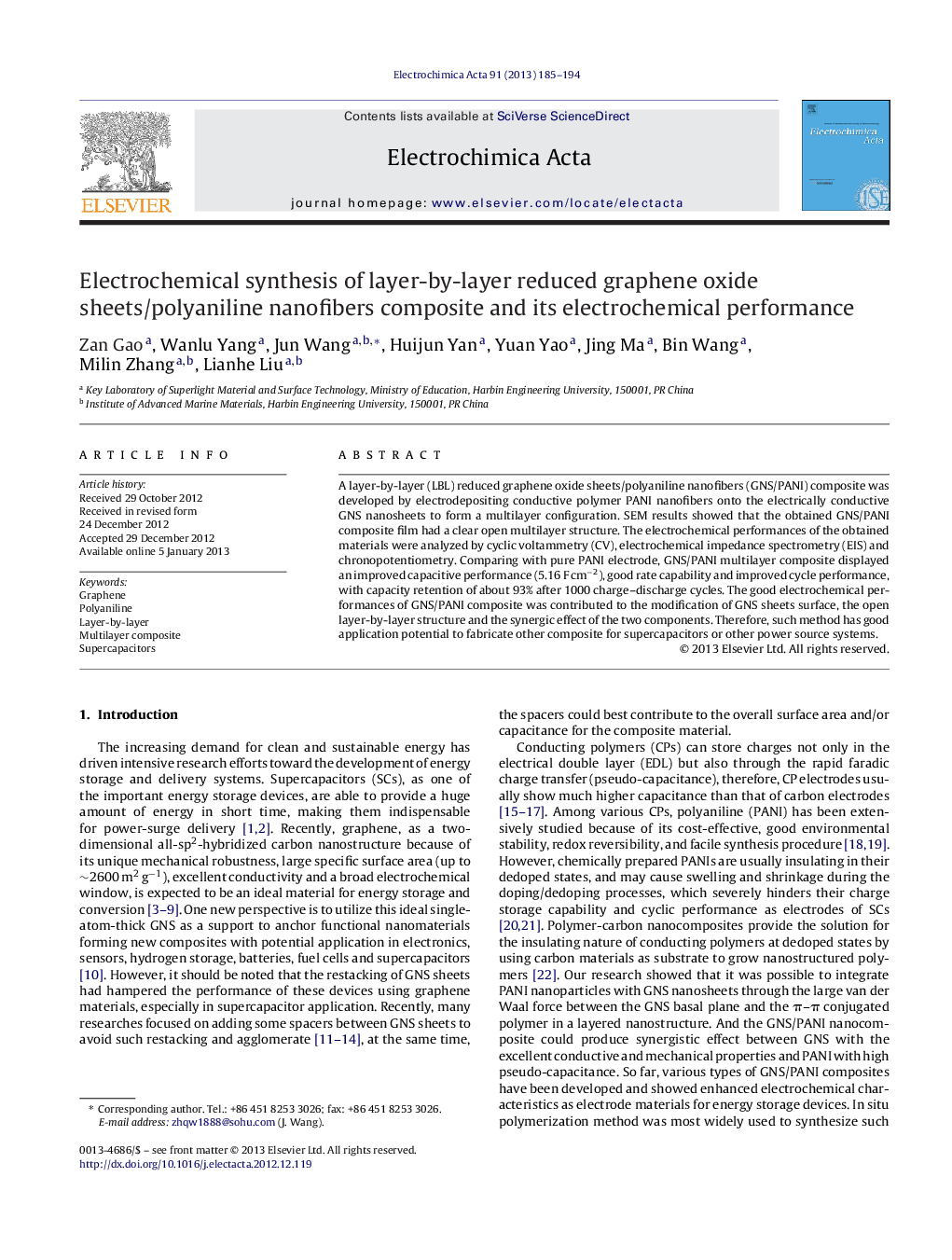| Article ID | Journal | Published Year | Pages | File Type |
|---|---|---|---|---|
| 186992 | Electrochimica Acta | 2013 | 10 Pages |
A layer-by-layer (LBL) reduced graphene oxide sheets/polyaniline nanofibers (GNS/PANI) composite was developed by electrodepositing conductive polymer PANI nanofibers onto the electrically conductive GNS nanosheets to form a multilayer configuration. SEM results showed that the obtained GNS/PANI composite film had a clear open multilayer structure. The electrochemical performances of the obtained materials were analyzed by cyclic voltammetry (CV), electrochemical impedance spectrometry (EIS) and chronopotentiometry. Comparing with pure PANI electrode, GNS/PANI multilayer composite displayed an improved capacitive performance (5.16 F cm−2), good rate capability and improved cycle performance, with capacity retention of about 93% after 1000 charge–discharge cycles. The good electrochemical performances of GNS/PANI composite was contributed to the modification of GNS sheets surface, the open layer-by-layer structure and the synergic effect of the two components. Therefore, such method has good application potential to fabricate other composite for supercapacitors or other power source systems.
Graphical abstractFigure optionsDownload full-size imageDownload as PowerPoint slideHighlights► A LBL-GNS/PANI composite is developed by electrodeposition PANI on GNS film followed by repeating this electrodeposition/dip-coating process. ► The resultant composite has a special open layer-by-layer nanostructure. ► The structure improves the contact between the electrode and the electrolyte. ► Results showed that these composites have good electrochemical property.
